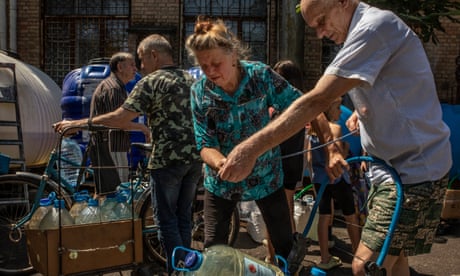War on the Environment
The climate costs of war and militaries can no longer be ignored
Two decades of international analysis and debate over the relationship between climate change and security has focused on how our rapidly destabilising climate could undermine the security of states. But it has largely ignored how national security choices, such as military spending or warfighting, can have an impact on the climate, and so undermine our collective security.
With climate breakdown under way and accelerating, it is imperative that we are able to understand and minimise the emissions from all societal activities, whether in peacetime or at war. But when it comes to military or conflict emissions, this remains a distant goal.
Russia’s war in Ukraine has seen the first attempt to comprehensively document the emissions from any conflict, and researchers have had to develop their methodologies from scratch. Their latest estimate puts the total as equivalent to the annual emissions of a country like Belgium. Ukraine is not a one-off, with a similar clamour for emissions data around Israel’s war against Hamas. While the devastating ongoing conflicts in Sudan or Myanmar are yet to see attention on their emissions, the trend is clear: the carbon cost of conflict needs to be understood, just as the humanitarian, economic or wider environmental costs do.

A proportion of those carbon costs come from military activities. For these, understanding is hampered by the longstanding culture of domestic environmental exceptionalism enjoyed by militaries, and how at the US’s insistence, this was translated into UN climate agreements. An exclusion to the 1997 Kyoto protocol became voluntary reporting under the 2015 Paris agreement. But when we began to collate and publish the emissions data that militaries report to the UNFCCC (United Nations Framework Convention on Climate Change), we found that only a handful of countries publish even the bare minimum required by UN reporting guidelines. Many countries with large militaries publish nothing at all.
The best estimate we have is that militaries are responsible for 5.5% of global greenhouse gas emissions. If the global military were a country, this would place it fourth in terms of its emissions, between India and Russia. Militaries are highly fossil fuel dependent and, while net zero targets have opened up debates around military decarbonisation, effective decarbonisation is impossible without understanding the scale of emissions, and without the domestic and international policy frameworks to encourage it. At present, we have neither, while carbon-intensive global military spending has reached record levels.
Ultimately, the international policy framework means the UNFCCC. While some militaries have set vague emissions reduction goals, they are often short on scope and detail, and on accountability. For example, while Nato has drafted a methodology for counting emissions, it does not apply to its members, and it explicitly excludes emissions from Nato-led operations and missions, training and exercises.
Amplified by the ongoing destruction of Gaza, Cop28 saw unprecedented attention on the relationship between the climate crisis, peace and security. But while visible in side events and protests, military and conflict emissions were again absent from the formal agenda. Closing this military and conflict emissions gap will first require that governments acknowledge the outsize role that militaries play in global emissions, and the need for greater transparency. It will require that the climate movement build on the growing trend towards intersectionality in its advocacy, and not shy away from these subjects. And it will depend on expanding the community of researchers documenting military and conflict emissions, and on their data being used by organizations tracking and reporting on global emissions trends.
For decades military environmental exceptionalism and narrow interpretations of climate security have undermined our collective climate security, this has got to change.
Doug Weir is the director of the Conflict and Environment Observatory, a UK charity that studies the environmental dimensions of armed conflicts and military activities. Its Military Emissions Gap project is a collaboration between academic and NGO partners and aims to improve implementation of the Paris agreement through greater military emissions reporting.
Leave a Reply